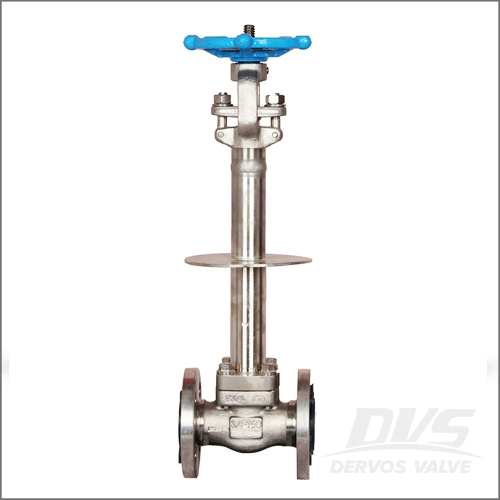The design, installation and inspection of cryogenic valves
Mostly, the cryogenic separation technique is adopted to separate cracked gas components such as hydrogen and methane in the current large or medium sized ethylene devices, and it can also be used in coal-to-methanol purification devices. In order to meet the requirement, cryogenic valves are widely used. Only by understanding the design requirements and special structures of cryogenic valves, can one make no mistake when choosing and installing the valves. And since cryogenic valves, especially ultra-low temperature valves, have extremely low operating temperatures, when designing such valves, in addition to the general valve design principles, there are some special requirements.
The design of the cryogenic valve has the following requirements, depending on the conditions of use:
1. Valves should not be a significant source of heat in cryogenic systems. This is because the inflow of heat will not only reduce the thermal efficiency, but also cause the internal fluid to evaporate rapidly when it is excessive, resulting in an abnormal pressure rise and a hazard.
2. The cryogenic medium should not have a detrimental effect on the handling of the wheel and the sealing performance of the packing.
3. Valve assemblies that come in direct contact with low temperature media should have explosion-proof and fire-resistant structure.
4. Valve assemblies that operate at low temperatures can't be lubricated, so structural measures are required to prevent parts from being scratched.
Test and inspection of cryogenic valves
1. Shell strength test at room temperature;
2. Upper sealing test at room temperature under low pressure;
3. Sealing test at room temperature under low pressure;
4. Gas leakage test for the upper seal at low temperature;
5. Gas leakage test at low temperature, etc., to ensure that the entire cryogenic valve meets the requirements of the standard;
6. The main components of the cryogenic valve should be treated at low temperature and each batch is sampled for low temperature impact test to ensure that the valves are not brittle at low temperature conditions and can withstand low temperature medium impact;
7. cryogenic valves (low temperature valves) are subjected to low temperature treatment and impact test according to the corresponding material specifications.
8. Static test -- The on-resistance between the valve body and the valve stem or the inner member and the valve body is less than 1 Ω.
